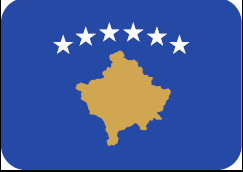VAT Standard rate
The standard VAT rate in Lithuania in 2024 is 21%.
VAT Reduced rate
9% is applicable for the:
- Heat energy is supplied for housing heating and for hot water is supplied for housing;
- Books and not periodical informational publications;
- Passenger transportation services by regular routes as well as transportation of passenger luggage;
- Accommodation services;
- Hospitality services;
- Sporting services;
- Cultural services;
- Firewood or wood products.
5% is applicable for the:
- Technical aids for disabled persons and for the repair of these technical aids;
- Supply of pharmaceuticals and medical aids to persons who have the right to the total or partial reimbursement of the acquisition expenses of these goods in accordance with the Law on Health Insurance;
- Newspapers, magazines, and periodical publications.
See the summary of the EU VAT rates.
Thresholds
From the 1st of July 2021, the distance selling thresholds were withdrawn and replaced by a unified threshold of €10,000 for all EU members.
In other words, VAT should be charged at the VAT rate of the customer’s country of residence by companies whose annual taxable cross-border turnover is over €10,000.
Deductible VAT
If goods or services were used to make taxable supplies in Lithuania, VAT in input invoices might be credited. For example:
- VAT paid at custom clearance with your EORI number;
- VAT paid to Lithuanian suppliers.
If you paid invoices before VAT registration you may deduct them after your registration.
Registration procedure
For VAT registration, the company will be required to complete and submit a VAT registration form, along with supporting documentation (with translation into Lithuanian language by authorizing translator and with an apostille):
- Certificate of incorporation;
- Trade register extract;
- VAT certificate;
- Articles of Association (the main points);
- Passport of Director.
If the company is appointing a local tax agent or Fiscal Representative, then a Letter of Authority or Power of Attorney is.
Tax representative
A foreign taxable person must be identified for VAT purposes through a subdivision within the territory of the country and where there is no such subdivision, through an appointed fiscal representative in the Republic of Lithuania. The requirement to appoint a fiscal representative shall not apply to taxable persons established in other Member States who may be identified for VAT purposes directly.
Other peculiarities
From the 1st January 2018, taxable persons established in the countries which are members of OECD (Organization for Economic Co-operation and Development), in which there is no VAT (or a tax identical to it) are entitled to apply for VAT paid in Lithuania refund. However, this provision applies for VAT paid on purchases from 1st January 2018.
VAT payment date
The dates for VAT payment are as follows:
- January by 25 February (preliminary VAT return);
- 2019 by 01 October 2020 (annual VAT return).
Filing VAT returns
A taxpayer must transmit tax returns only submitted electronically via the Electronic Declaration (EDS) system. LOVAT platform supports digital submission.
The period for submitting preliminary VAT returns is generally the calendar month. If the Annual taxable turnover (net) for the previous calendar year is up to €300,000, the business owner shall be entitled to file an application with the tax administrator to regard a calendar quarter as the tax period.
The business owner also can choose another tax period, namely, such a period may not be longer than 60 days.
The dates for filing tax returns are as follows:
- January – by 25 February;
- February – by 25 March.
Annual VAT returns – by 01 October.
At the Lovat portal, you can see your deadlines.


